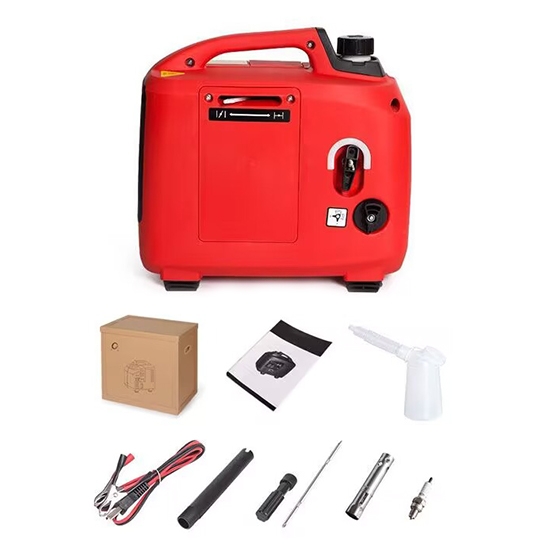Servicing an inverter generator requires a systematic approach to diagnosing and solving common problems, from simple fixes to more technical repairs. With timely repairs and maintenance, the life of the inverter generator can be extended. Promptly discovering and repairing potential problems can prevent the failure from expanding and reduce the cost of replacing new equipment due to equipment damage. The following is a step-by-step guide to help you troubleshoot and repair common problems.
Preparation
- Disconnect the power supply: Before performing any repair work, first, completely disconnect the power connection from the inverter generator to avoid the risk of electric shock.
- Prepare tools: Prepare a multimeter, screwdriver, welding tools insulating tape, new components (such as diodes, IGBT modules, capacitors, etc.) and replacement parts that may be needed.
- Consult the manual: Read the quiet inverter generator's user manual or maintenance manual to understand its structure and function, as well as possible problems and solutions.
Identify the problem
Check the user manual for troubleshooting guides specific to your generator model. Common problems include no power output, engine failure to start, overheating, low power output and abnormal noise or vibration.
Common faults and solutions
Engine won't start
- Check fuel level and quality: Make sure there is enough fuel and it is fresh. Old fuel can clog the carburetor.
- Check fuel system: If you have a fuel generator that won't start, check the fuel lines and filter for clogs. Clean or replace as needed.
- Check oil level: Many inverter generators have a low oil level sensor that prevents starting when the oil level is low. Top up if necessary.
- Check spark plugs: Remove and inspect the spark plugs. Clean or replace if they are dirty or worn. Make sure the spark plug gap is correct.
- Test choke and carburetor: If starting problems persist, make sure the choke is in the correct position, especially during cold starts. A clogged carburetor can also prevent starting, so clean the carburetor if needed.
No power output
- Reset circuit breaker: Most portable inverter generators have a built-in circuit breaker. If the circuit breaker is tripped, reset it and see if power output is restored.
- Check sockets: Sometimes sockets can become loose or damaged. Check for any visible wear and replace faulty outlets if necessary.
Check the voltage regulator: The voltage regulator is critical to power output. If your generator's voltage regulator is faulty, it may need to be replaced.
Test the inverter module: For inverter generators, the inverter module can fail. This can be difficult to fix without the specific parts, so consult a professional if you suspect a problem with the power inverter for home.
Low power output or fluctuations
- Check for overload: Make sure you are not overloading the power inverter generator by using more power than it can handle. Unplug certain devices and retest.
- Check the air filter: A clogged air filter can restrict airflow to the engine, reducing performance. Clean or replace the air filter.
- Check the carburetor: Sediment in the carburetor can affect engine performance. Clean the carburetor with carburetor cleaner.
- Test the governor: The governor controls engine speed. If it fails, the inverter generator may not produce consistent power. Adjust or replace it if necessary.
Overheating
- Clean cooling vents: Make sure the vents are free of dust, debris, or obstructions. A dirty inverter generator is more likely to overheat.
- Check the cooling fan: If the fan is not working, replace it. A damaged fan can cause overheating.
- Check oil level: A low oil level can cause the engine to overheat. Make sure the oil level is full, and replace it if it is old or dirty.
Unusual noise or vibration
- Tighten loose bolts and screws: Vibration can be caused by loose parts. Check and tighten any bolts or screws on the generator.
- Check muffler: A damaged or clogged muffler can cause unusual noises. Clean or replace the muffler if necessary.
- Check engine mounts: Worn or damaged engine mounts can cause excessive vibrations. Replace the mounts if necessary.
- Check bearings: Worn bearings can cause grinding noises. Replace any faulty bearings with the help of a professional.
Clean and reassemble
- Replace worn parts: Replace any damaged or worn parts, such as spark plugs, filters, or broken wires.
- Reassembly: Reassemble the inverter generator and make sure all parts are tightened and properly connected.
Testing and debugging
- Overall test: After all repairs are completed, reassemble the inverter generator and perform an overall test. The test content includes whether the output voltage, current, frequency and other parameters meet the specification requirements.
- Debugging optimization: If the test results are not ideal, debugging optimization is required. This may include adjusting circuit parameters, replacing more suitable components or making other necessary adjustments.
